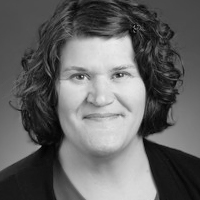This text-based course is a transcript of the webinar, “Cleft Lip and Palate: Supporting Oral Feeding from Birth through Palatoplasty,” presented by Brenda Thompson, MA, CCC-SLP, BCS-S; Ann Clonan, M.Ed, CCC-SLP. This course is presented in partnership with Cincinnati Children's.
Editor's Note: This transcript contains several videos. You will need to view the course from a computer in order to access them (Note: the videos do not have audio).
Brenda and I have worked in both the inpatient and outpatient arenas of our hospital and specialized with this population in both of those settings for many years. That experience has led us to the development of both our expertise for this population as well as our approach to providing the services considering the individual feeding challenges. It is based on the beliefs that many of these infants can be very successful oral feeders and that expertise is critical to these patients and their families. It assures that appropriate interventions are implemented promptly to maximize that infant's oral feeding function resulting in the best outcomes for growth, general health and development. It also contributes significantly to that family's feeling of success.
Learning Objectives
After this course readers will be able to:
- Explain the oral structures and their responsibility to support oral feeding
- Describe how commercial cleft bottles support more efficient oral intake with patients with cleft lip and or palate
- List other interventions to support best outcomes for feeding
We will specifically focus on the anatomical consideration for oral feeding and clefting's impact on feeding and swallowing, the assessment and intervention for infants with cleft lip and or palate including materials and goals. We will address this at the following stages: newborn, transitional stage of puree and cup drinking, and palatoplasty.
Embryology
What is a cleft and how does it occur? A cleft is a result of failure of fusion during embryonic development of the face. It can be caused by both genetic interactions as well as exogenous factors which may include therapeutic agents, alcohol consumption, cigarette smoking, the nutritional status of the mother, folic acid deficiency or pre-gestational diabetes. In the last 10 years in utero diagnosis via ultrasound at the cleft as well as possible related syndromes has increased and allows families to be better prepared for and educated regarding the infant's medical and developmental strengths and challenges.
Development of this area occurs early on, specifically at the fourth week. Specifics by week are noted below:
- 4th Week
- Develop median frontonasal prominence and paired maxillary prominences and mandibular prominences
- End of 4th week
- Inferior frontonasal prominence divides into medial and lateral nasal prominences
- Nasal alae are formed by elevation of the lateral nasal prominences
- End of 6th week
- Upper lip and primary palate complete formation by fusion of bilateral maxillary prominences with 2 medial nasal prominences.
- 6th to 7th week (Secondary palate)
- Bilateral palatal shelves of maxillary processes begin vertical growth phase and transition to horizontal growth
- Palatal shelves fuse in midline and fuse to primary palate anteriorly as well as with nasal septum
- 8th week
- Ossification occurs of anterior aspect of secondary palate (differentiates hard from soft palate)
- 10th week
- Palatal development is complete
(Hartzell et al, 2014; Development of The Palate, Review of MEDICAL EMBRYOLOGY, BEN PANSKY, PhD, MD, 1982)

